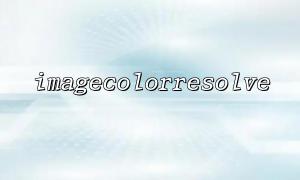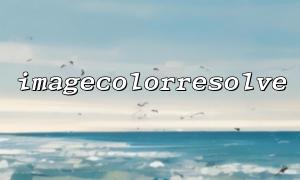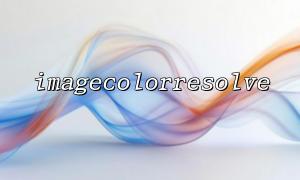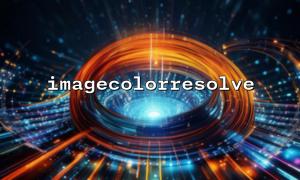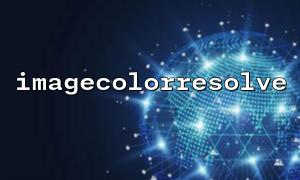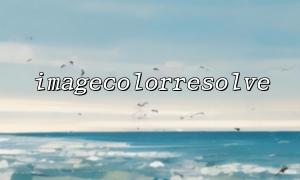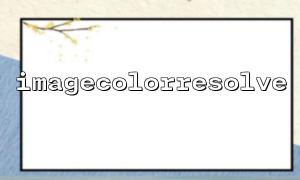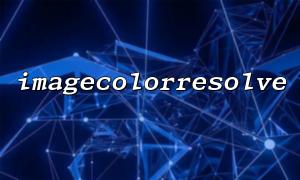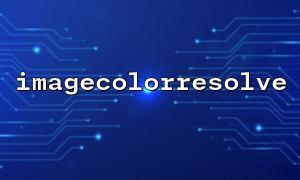Image processing is a common task in development, especially in web development, where the demand for dynamic image generation and modification is increasing. In PHP, some functions that process images provide rich image manipulation capabilities. Among them, imagecolorresolve() is a very practical function, usually used for image color filling. Today, we will explain in depth how to use imagecolorresolve() to fill color for image templates and explore how to apply this function in actual development.
imagecolorresolve() is a function provided by the GD library in PHP to obtain an index of an image color based on a given RGB (red, green and blue) value. If the color does not exist in the image's palette, imagecolorresolve() will return false . And if the color exists, it returns the index of the color in the palette.
First, we need to create an image template, then use imagecolorresolve() to get a specific color, which can then be used to fill the image or draw the shape. Here is a basic code example:
<?php
// Create a 500x500 Blank image of pixels
$image = imagecreatetruecolor(500, 500);
// use imagecolorresolve() Get the color
$color = imagecolorresolve($image, 255, 0, 0); // Get red
// Determine whether the color is valid
if ($color === false) {
echo "无法Get the color。";
} else {
// use获取的颜色填充图像背景
imagefill($image, 0, 0, $color);
// Output image
header('Content-Type: image/png');
imagepng($image);
}
// Release image resources
imagedestroy($image);
?>
Create an image : We use imagecreatetruecolor() to create a blank image of 500x500. Here is the template we want to operate on.
Get color : Use imagecolorresolve() to get the color of a specific RGB value. In the example above, we get red (255, 0, 0).
Fill background : Apply the obtained color to the background of the entire image through the imagefill() function.
Output image : Use imagepng() to output image content and display it through the browser.
Release resources : Use imagedestroy() to free up image resources to avoid memory leakage.
While both imagecolorresolve() and imagecolorallocate() can be used to get colors and fill images, there are some differences between them. imagecolorallocate() always assigns a new color index, while imagecolorresolve() will first try to find the color in the image's palette. If the color already exists, the color index is returned directly, which helps save memory.
imagecolorresolve() is very useful in many practical scenarios. For example, when dynamically generating images, the template can be filled according to the input color provided by the user. For example, if you are generating a user-uploaded logo, you may need to fill the image based on the color selected by the user. At this time, imagecolorresolve() can help you avoid reallocating memory.
In addition to imagecolorresolve() , the GD library also provides some other ways to fill colors, such as:
imagefill() : Fill a rectangular area.
imagefilledelipse() : Draws a filled ellipse.
imagefilledpolygon() : Draw a filled polygon.
In PHP, using the imagecolorresolve() function can effectively help us fill colors in images, especially when it is necessary to fill dynamically based on RGB values. It is more efficient than imagecolorallocate() , especially if the color is already available in the palette. In addition, the GD library also provides a wealth of other image processing functions that allow you to make more creativity and customization in image generation and editing.
